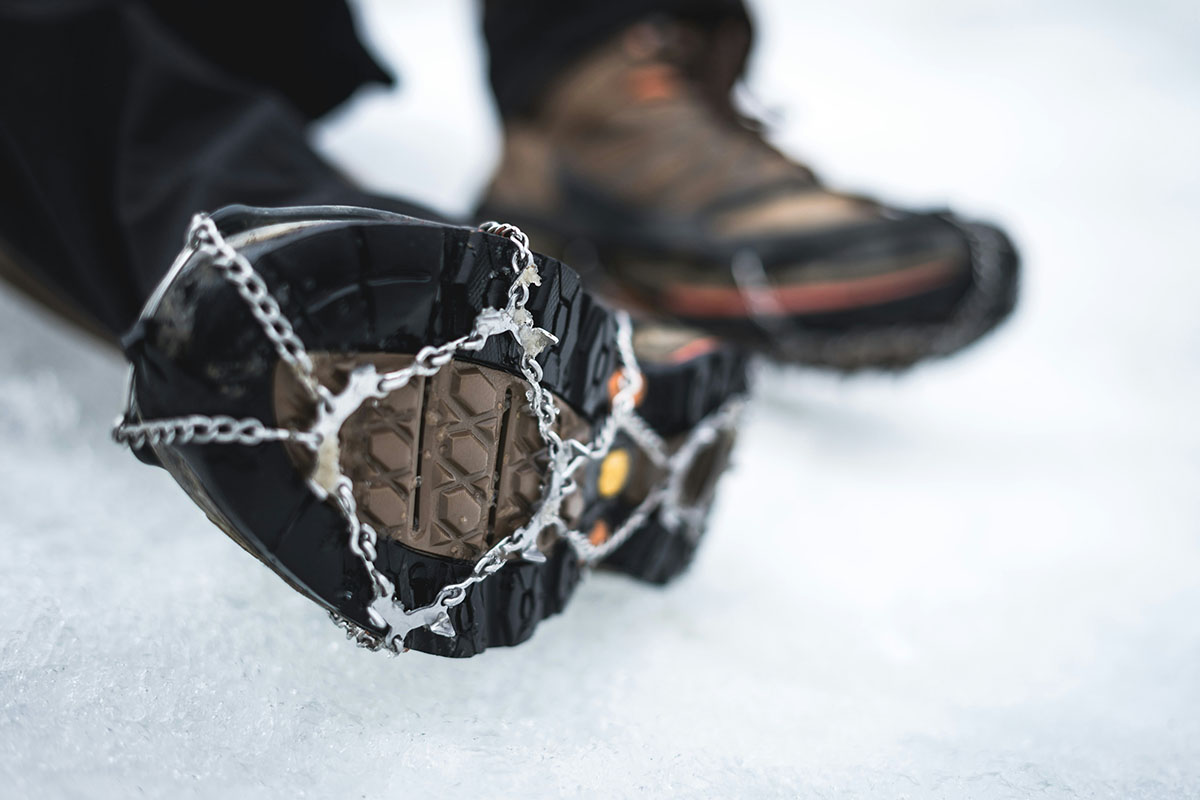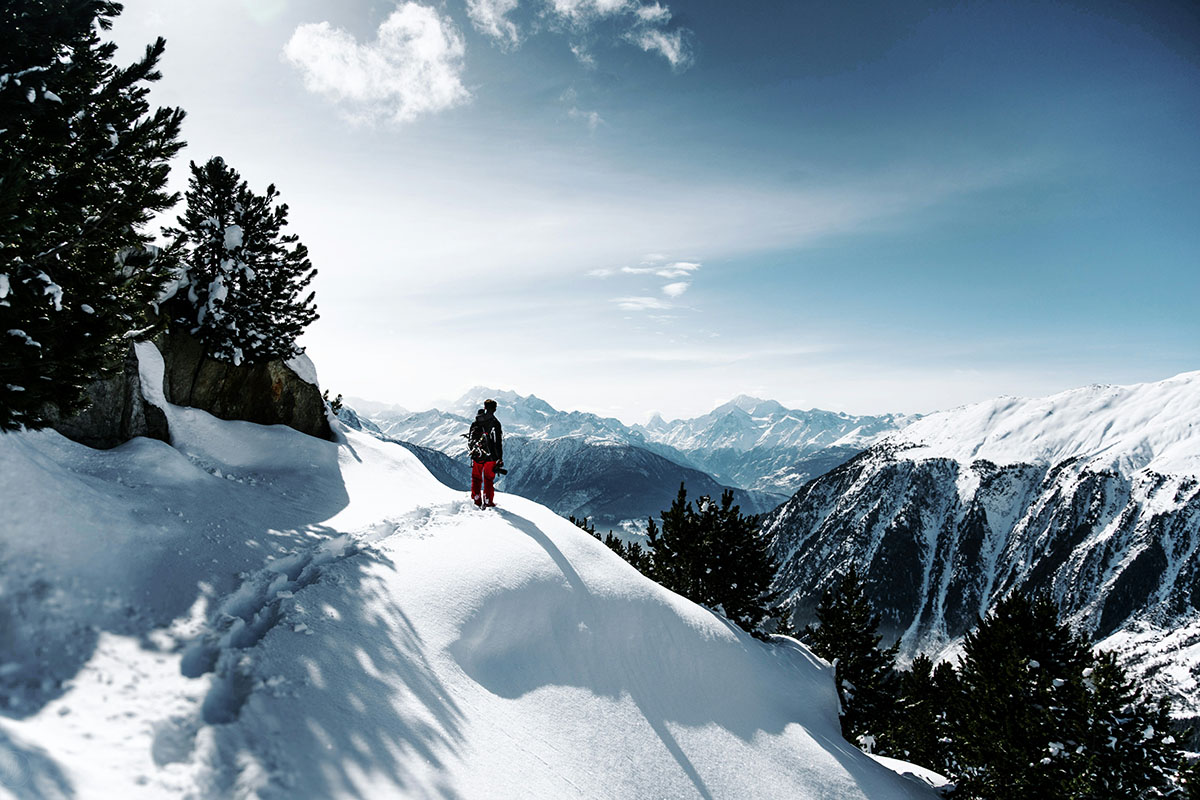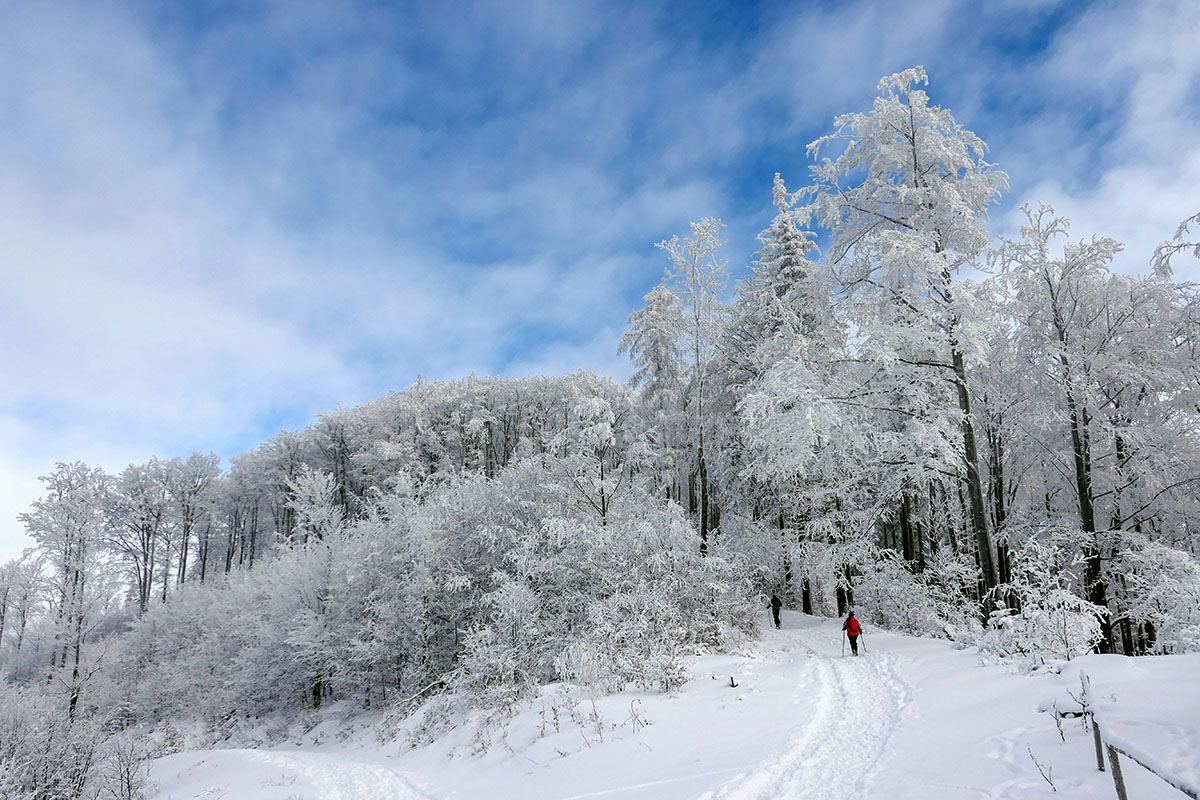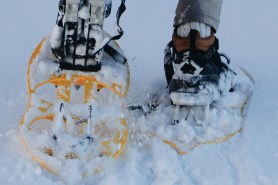

Thinking about heading outdoors for a hike, but then remembering it’s still winter? Pack some extra layers, check the weather forecast, and give it a try. The benefits of being outside and moving your body are just as great in the winter as they are during the rest of the year.
Videos by Outdoors with Bear Grylls
Compared to the warmer months, depending on where you are, you may find fewer people on the trails when it is chilly out. Or, if the winter weather is nice in your neck of the woods, you can enjoy places in nature that are far too hot to enjoy during other times of the year.
Hiking in freezing temperatures, on icy trails, and in winter conditions isn’t ideal, though. If you understand the unique challenges of hiking in the winter, have the right gear, and take some extra safety precautions, you can have fun and stay safe while enjoying winter landscapes.
In fact, there’s no need to wait until spring to venture out into nature. We’ve compiled some winter hiking tips and guidance, including essential gear and safety information, to help you gain confidence when heading out on the trails to enjoy some chilly winter hiking.
Winter Hiking Challenges at a Glance

But first, let’s talk about what you’re up against when you go out for a winter hike. Here’s a quick rundown of potential challenges when hiking in the winter and/or in cold weather.
- Extreme or moderately cold temperatures
- Increased risk of hypothermia and frostbite
- Snow and ice
- Reduced daylight hours
- Challenging trail conditions and navigation
- Harsh winter weather
When temperatures dip below freezing, your body loses more heat than it generates. Cold temperatures require a strategy to stay warm by preserving body heat and to stay dry by bringing the right gear. Preparation can help you stay safe, but you might still feel cold at times.
In cold weather, you’re at a higher risk of cold-related illnesses such as hypothermia and frostbite. Know the signs (covered below), and always be prepared with emergency supplies like a space blanket or emergency blanket that can help you stay warm.
Hiking in snow and ice can also be dangerous. It’s slippery, and there’s a risk you could lose your footing and get injured. Wearing proper footwear and traction devices can make a world of difference.
In the wintertime, fewer hours of daylight can leave you out on the trails in diminishing light. If you’re day hiking, plan ahead so that you can return to your home base before it gets dark.
Winter weather, like snow or heavy rain, can leave trails damaged, muddy, or icy. Be cautious when passing through challenging winter trail conditions and be aware that you might have reduced visibility, making trails harder to follow. Also, plan to have backup navigation in case you get turned around and your first navigation method fails.
Finally, winter weather can be unpredictable. It could rain or snow, the wind could pick up, and the temperatures could dip. If you’re hiking in a mountainous area, be aware of avalanche terrain.
For information about how to plan for a day hike any time of year, check out our day hiking essentials article.
Essential Gear for Winter Hiking

What to Wear on a Winter Hike
More so than any other time of year, what you wear on a winter hike matters. Layering warm clothes in the right order is going to make winter hikes way more enjoyable. You can always adjust layers by removing them if you get too warm.
Here’s the right order:
- A moisture-wicking base layer
- An insulating layer (fleece or down)
- A waterproof and windproof outer layer
The base, insulating, and waterproof layers are a must for your top half. For your bottom half, go with some pants designed for winter weather. Here are some of the best winter hiking pants.
On your feet, go with insulated and waterproof winter hiking boots, plus warm winter socks (maybe even heated socks). You can add gaiters to prevent snow from creeping in your boots, too. If you’re hiking in deep snow, wear snowshoes.
If you’re hiking on icy trails, hard-packed snow, or think you may encounter ice, consider bringing traction devices like crampons to help you keep your footing.
Limit exposed skin by remembering to protect your extremities on winter hikes. Bring a winter hat and winter gloves or hiking gloves. Also wear some hiking sunglasses to protect your eyes from the sun’s reflection off the snow.
What to Put in Your Pack for a Winter Hike
Besides the gear you wear on your body, bring some gear in your hiking daypack that’ll help you stay safe and comfortable while cold-weather hiking.
The ten essentials are a good place to start when considering what to pack for a hike in cold weather.
- Navigation tools: Paper map, compass, fully charged GPS-enabled device (remember, you may lose cell service)
- Sun protection: Sunscreen, hiking hat, hiking sunglasses
- Extra clothing: Pack extra layers in case the ones you’re wearing get wet
- Light source: Headlamp or flashlight with extra batteries
- First aid: Small first-aid kit, pain relievers, personal medications
- Fire supplies: Waterproof matches, lighter, fire starters
- Tools and repair kit: Multi-tool, duct tape, basic repair kit
- Extra food: Pack snacks plus extra high-energy, nutrient-dense emergency food
- Water: Water bottles and/or hydration reservoir, water-filtration straw and/or purification tablets
- Shelter: Lightweight emergency shelter, emergency blanket, or bivy sack
Safety-Related Winter Hiking Tips

Before you head out for a cold-weather hike, check the weather forecast and know what you’re heading into, also keeping in mind that things can change quickly.
Check trail conditions in advance, since you may lose cell service once you’re near the trail, tell someone where you’re going and share your planned route with them, and hike with other people, if possible.
Don’t get cocky; know what your limits are and don’t push yourself, especially if you’re hiking in extreme weather.
Stay hydrated by drinking fluids, even if you don’t feel thirsty. Consider bringing warm water or another warm beverage in an insulated container to entice yourself to keep sipping on it and warm yourself from the inside out.
Bring plenty of snacks to keep nourished and store them in a convenient spot in your hiking daypack. Bringing extra food is always a good idea.
In addition to wearing the proper clothing to manage your body temperature and wearing the appropriate footwear, consider using traction devices and/or using trekking poles/hiking poles for stability. Slips and falls are even more of a threat when hiking on slick ice and snow.
When winter hiking, watch for thin ice. Avoid walking on ice that’s less than 4 inches thick.
Keep in mind that route finding may be more difficult in the winter, especially if there’s snow on the trail. You’ll lose daylight faster than you do while summer hiking, so prepare by getting an earlier start and having a backup navigation tool.
If you’re day hiking, keep some warm drinks in the car for when your group gets back. This will help bring everyone’s body temperature back up to where it should be faster—plus, a warm drink like hot chocolate will be a nice treat to look forward to.
Cold-Related Illnesses
Prolonged exposure to cold puts you at risk for cold-related illnesses like hypothermia and frostbite.
The Centers for Disease Control (CDC) says early warning signs of hypothermia include shivering, fatigue, loss of coordination, and confusion or disorientation. Late symptoms include no shivering, blue skin, dilated pupils, and a slowed pulse.
Frostbite can permanently damage your tissues and shouldn’t be taken lightly. Your nose, ears, cheeks, chin, fingers, and toes are typically most at risk. The CDC lists symptoms of frostbite as numbness, tingling or stinging, aching, and bluish or pale skin.
Avalanche Awareness
If you’re hiking in snow and in prime avalanche conditions, check the avalanche forecast in the area before you head out for a winter hike.
Most avalanches occur on slopes that are 30-45 degrees, and peak avalanche season is from December to March.
If avalanche conditions look iffy, don’t go out unless you have avalanche safety equipment, such as a helmet, an avalanche beacon, an avalanche airbag, a collapsible avalanche probe, and a small shovel.
If you’re on a multi-day hike, also check out our winter camping tips.
Trail Etiquette for Winter Hiking

As always when hiking, protect the area you’re enjoying by “leaving no trace.” Respect wildlife by keeping a safe distance, stick to maintained trails whenever possible, and pack out when you bring in.
The seven Leave No Trace principles are:
- Plan ahead and prepare
- Travel and camp on durable surfaces
- Dispose of waste properly
- Leave what you find
- Minimize campfire impacts
- Respect wildlife
- Be considerate of other visitors
Is Winter Hiking Worth It?

There’s technically no temperature too cold for hiking; but that doesn’t mean it’s safe for everyone to go out in extreme temperatures. Your own physical conditioning, training, and gear will determine how cold is too cold for you.
Difficult conditions can make winter hiking more difficult than hiking during other times of the year. However, with some planning and preparation, you can certainly go out safely and have some fun. Prioritize staying warm and knowing what conditions are like on the trail, and be sure to pack some emergency gear just in case.









